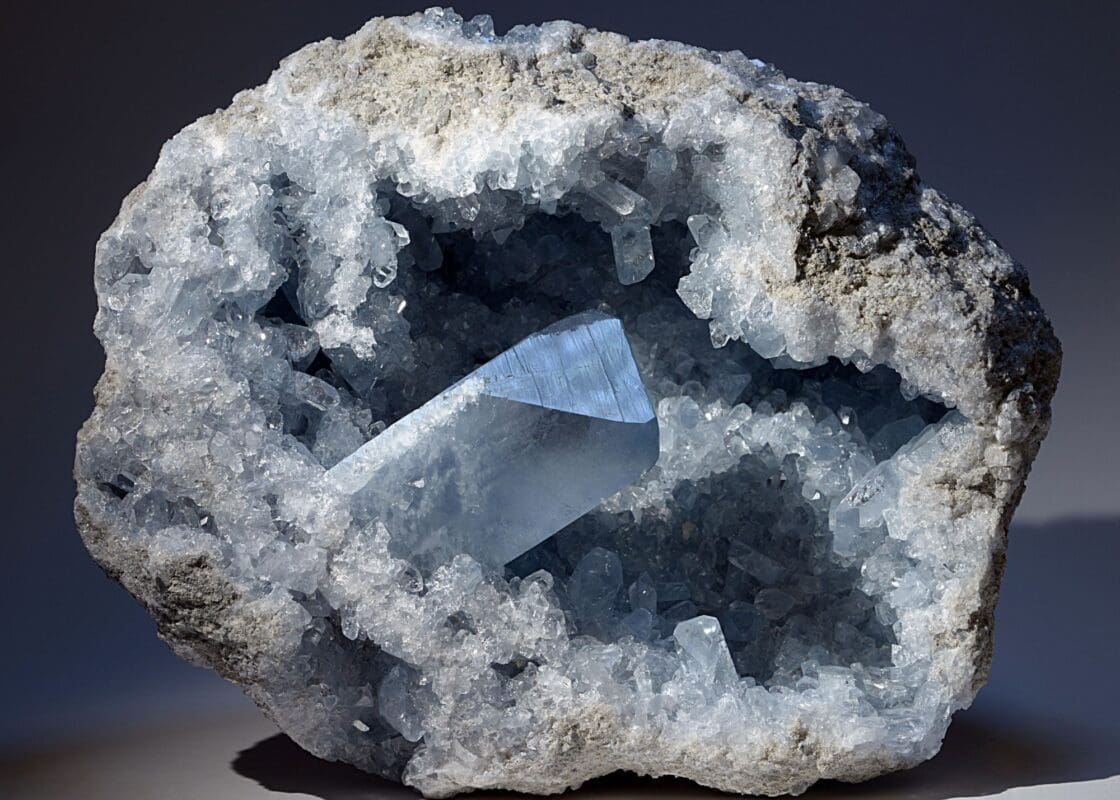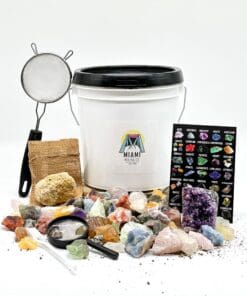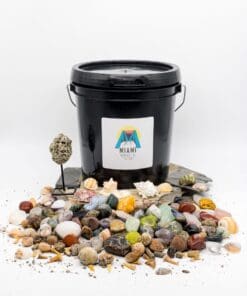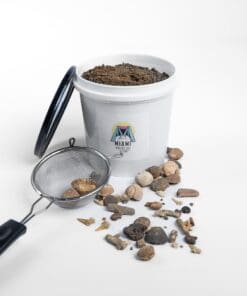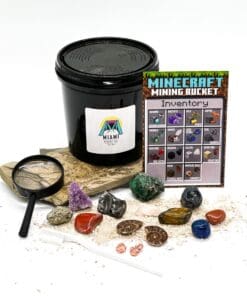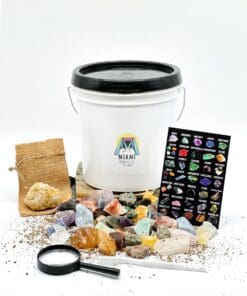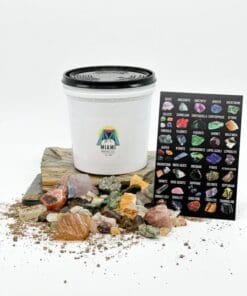Missouri’s Hidden Gems: Your Comprehensive Guide to Gem Mining Missouri
The beautiful state of Missouri, with its lush landscapes, has more than meets the eye. Beneath its surface lies a treasure trove of sparkling gemstones waiting to be discovered. Gem mining in Missouri offers both locals and tourists a chance to engage with the state’s rich geological history and go home with a tangible piece of it. In this article, we will guide you through the state’s gems, the best mining spots, its rich mining history, and everything you need to embark on your gem hunting adventure.
The Most Popular Gemstones in Missouri
Missouri’s diverse geology plays host to an array of gemstones. From those that sparkle in everyday jewelry to rarities that are sought after by seasoned collectors, there’s something for everyone in the Show-Me State.
Rare Gemstones Found in Missouri:
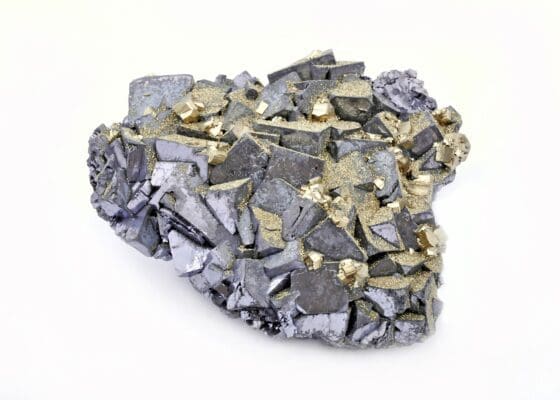
| Gemstone | Description |
|---|---|
| Galena | Lead ore with a bright metallic luster. Often found in large cubic crystals. |
| Drusy Quartz | Micro-crystalline quartz with a sparkling surface. Commonly found lining the interior of geodes. |
| Mozarkite | A colorful variant of chert. Recognized as Missouri’s official state rock. |
| Celestine | Strontium sulfate mineral found in beautiful blue crystals. |
| Barite | Heavy mineral occurring in a range of colors, often found in tabular crystals or rosette shapes. |
Common Gemstones Found in Missouri:
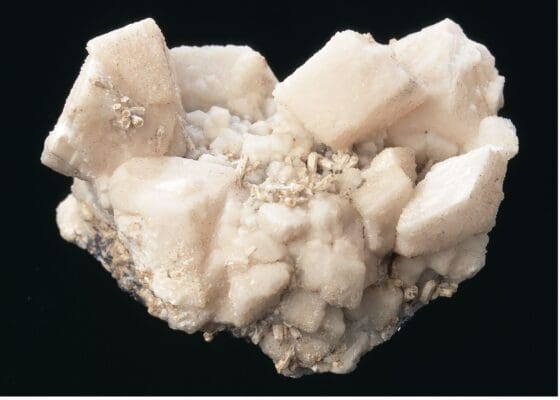
| Gemstone | Description |
|---|---|
| Quartz | One of the most varied minerals, can be found in a variety of colors and formations. |
| Calcite | A common crystal, found in many caves in Missouri, exhibiting a range of colors. |
| Chert | A sedimentary rock which can be polished to a high shine and used in jewelry. |
| Jasper | A form of chert, known for its rich reds, browns, and yellows. |
| Pyrite | Often known as “fool’s gold” because of its shiny, metallic appearance. |
| Hematite | Metallic gray or black in appearance, often used for jewelry and as an ore for iron. |
| Agate | Translucent rock, often with a banded appearance, used for jewelry and ornamental purposes. |
| Dolomite | Often forms pink, curved crystals. Used both as a gem and for industrial purposes. |
| Fluorite | A colorful mineral which glows under UV light. Often found in purple, green, or yellow. |
| Marcasite | Often confused with pyrite, it has a more delicate structure and is less shiny than pyrite. |
Gem enthusiasts, whether amateur or professional, can find a rewarding experience searching for these stones across Missouri’s varied terrains.
Top Gem Mining Locations in Missouri

- Jacob’s Geodes Mine: Nestled in Hamilton, Illinois (just near the Missouri border), this mine is famous for producing geodes, which potentially contain quartz, calcite, and other minerals. They operate from May to October, 8 AM to 6 PM. Fees vary depending on the number of geodes you choose to mine.
- Missouri Mines State Historic Site: Located in Park Hills, this isn’t a direct mining site but is a must-visit for insights into Missouri’s rich mining culture. The site is open from 9 AM to 4 PM, and entrance fees apply, with discounts available for children and seniors.
- Sheffler Rock Shop: Based in Eminence, this site is not only a shop but also offers dig-your-own geode experiences. Typically, they’re open daily from 9 AM to 5 PM. Fees are determined by the weight of the geodes you find.
- Mineral Springs Trading Co: Located in Dixon, this location offers sluicing experiences where gems, fossils, and arrowheads can be found. The trading post is open from 10 AM to 6 PM. Fees depend on the size of the gem dirt bag you purchase.
- Saltpeter Cave: This cave in Herculaneum is renowned for its sparkling drusy quartz. However, it’s essential to secure permissions before visiting as it’s on private property.
- Elephant Rocks State Park: Based in Belleview, while primarily a park, this site is also known for its granite boulders and potential mineral finds. The park opens from sunrise to sunset with no specific mining fee, but a conservation-friendly approach is advised.
- Blue Spring: Situated near Eminence, this is another private property location where geodes can be found. Prior permission is crucial, and fees may vary based on the agreement with the landowner.
- Rocky Creek Conservation Area: Located near Patterson, this site offers potential finds of agate and jasper. Open from sunrise to sunset, there’s no specific fee, but gem hunters should follow conservation guidelines.
- Little Indian Creek Conservation Area: This site in Sullivan is known for its potential finds of chalcedony and agates. It’s open from sunrise to sunset, with no specific gem hunting fee, but adherence to conservation rules is mandatory.
Whether you’re an amateur or a seasoned gem hunter, Missouri has something to offer everyone. From geodes bursting with hidden crystals to scenic parks filled with potential gem finds, there’s always a new treasure awaiting discovery.
History of Gem Mining in Missouri

Missouri, often referred to as the “Cave State,” boasts over 7,300 recorded caves, making it a veritable playground for mineral enthusiasts. Its rich gem mining history offers a tapestry of stories, exploration, and discovery.
Gem and mineral extraction in Missouri began with its earliest inhabitants, the Native Americans. They would extract flint and chert to craft tools, weapons, and ceremonial objects. However, it wasn’t until the arrival of European settlers in the 18th century that the full spectrum of Missouri’s mineral wealth became apparent.
Lead was the first significant mineral to draw settlers’ attention. In the late 1700s, a lead boom in the Southeastern part of the state, especially in what is now known as the “Old Lead Belt,” drew many to Missouri. This led to a proliferation of mines, laying the foundation for the state’s mining culture. By the 19th century, towns like Joplin were bustling with activity as miners extracted zinc, creating a booming industry that earned Missouri the title of the world’s leading zinc producer by the early 1900s.
Galena, another crucial mineral, gained notoriety not only for its value but also as an indicator of other valuable minerals. The presence of galena was often seen as a sign that other, sometimes rarer, minerals might also be close by.
The mid-20th century witnessed a shift. As surface minerals became scarcer, the focus shifted underground. Missouri earned its nickname as the “Cave State” during this time, as miners delved deeper beneath the earth’s surface. This period also led to the discovery of unique minerals in the state, such as the beautiful drusy quartz found in many of Missouri’s caves.
However, mining was not without its challenges. As with any extractive industry, environmental concerns emerged, leading to regulations and conservation efforts to ensure that Missouri’s landscapes remained protected.
Today, while large-scale mining operations have reduced, Missouri continues to entice gem and mineral enthusiasts, historians, and hobbyists alike. The legacy of its mining past is evident in its historic sites, museums, and the gems that still lie waiting to be discovered beneath its soil.
Gem Mining Regulations in Missouri

Missouri’s rich tapestry of minerals and gems is complemented by a framework of regulations ensuring both sustainable mining and conservation of the state’s diverse ecosystems. Understanding the legal framework of gem hunting in Missouri is crucial for anyone intending to engage in the activity, be it for leisure or commercial purposes.
Firstly, it’s essential to recognize that mining on private land always requires explicit permission from the landowner. Venturing onto private property without consent can lead to trespassing charges. Hence, potential gem hunters should always seek the necessary permissions, written when possible, before initiating their gem hunting journey.
For public lands, the scenario changes. Many state parks, forests, and conservation areas in Missouri allow recreational rock and mineral collecting. However, these areas often have specific guidelines and restrictions to ensure minimal impact on the environment. Typically, collection is allowed for personal, non-commercial use and often limited to surface collection, meaning no digging or use of tools.
Some minerals have added layers of protection. For instance, due to its historical significance, galena, a primary lead ore, is restricted from collection in certain areas, especially where active mining operations or significant deposits exist.
In areas overseen by the Missouri Department of Conservation (MDC), certain guidelines need adherence. The use of metal detectors, for instance, is restricted in many of these locations. Additionally, removing plant or historical artifacts is strictly prohibited.
Moreover, there’s an emphasis on ‘Leave No Trace’ principles. Minimizing the impact on the environment, refilling any holes dug, and ensuring that the area looks as it did before the hunt is a standard requirement across many public lands.
For those considering more extensive mining operations or commercial extraction, the regulations become more stringent. Necessary permits and licenses must be obtained from the Missouri Department of Natural Resources. Such permits ensure that any mining operations do not adversely affect the environment or the state’s water resources.
In conclusion, while Missouri is indeed a haven for mineral enthusiasts, the state’s regulations ensure a balance between exploration and conservation. It’s a testament to Missouri’s commitment to preserving its natural heritage while still allowing enthusiasts and professionals to partake in the joy of discovery. Any gem hunter, amateur or professional, should acquaint themselves with these regulations to ensure a trouble-free and respectful mining experience.
Necessary Tools and Equipment for Gem Mining in Missouri
Missouri’s diverse terrains and mineral deposits call for an array of tools and equipment to maximize one’s gem hunting experience. Whether you’re at the riverside, sifting through cave debris, or exploring an open pit, being equipped with the right tools can significantly enhance your chances of uncovering hidden treasures.
1. Screening and Classifying Tools: Reveal those hidden treasures!
Description: When hunting for gems near riverbeds or in gravel deposits, a set of sifting screens can be invaluable. These screens help separate larger rocks from potential gemstones, making it easier to spot treasures.

🛒 Explore Top Screening Sets on Amazon
2. Shovels and Trowels: Digging deep or just scratching the surface?
Description: Useful for digging in softer terrains or when removing overburden to access the rock below.

🛒 Find Quality Shovels and Trowels on Amazon
3. Picks and Hammers: The backbone of any gem hunting endeavor.
Description: A must-have for any mineral enthusiast. This tool aids in breaking open rocks and extracting samples. Remember, though, always wear safety goggles when using a hammer to prevent flying rock shards from causing injury.

🛒 Check Out Best Picks and Hammers on Amazon
4. Buckets: Your trusted companion for carrying treasures.
Description: You’ll need something to carry your finds. A sturdy bucket can also be used to transport water if you’re sluicing or washing off dirt from your discoveries.

🛒 Shop for Reliable Buckets on Amazon
5. Magnifying Glass: Every detail counts!
Description: These are particularly useful for picking up and examining smaller stones or crystals. A magnifying glass can help identify minute details that differentiate one mineral from another.

🛒 Grab Your Magnifying Glass on Amazon
6. Guidebooks and Field Guides: Knowledge at your fingertips.
Description: Before you set out, arm yourself with a good field guide to minerals and rocks specific to Missouri. This will not only help you identify potential finds but also provide insights into the types of terrains and locations where specific minerals might be found.

🛒 Discover the Best Field Guides on Amazon
7. Containers and Bags: Organize, store, and flaunt your finds.
Description: As you collect specimens, having durable bags or containers prevents damage to your finds and makes it easier to carry them.

🛒 Shop for Storage Solutions on Amazon
8. First Aid Kit: Better safe than sorry!
Description: Accidents can happen. It’s always good to be prepared with a basic first-aid kit containing bandages, antiseptic wipes, and other essentials.

🛒 Secure Your First Aid Kit on Amazon
In conclusion, while the allure of gem hunting lies in the thrill of discovery, having the right tools can significantly enhance the experience. Ensure you’re adequately prepared, and always prioritize safety. Whether you’re a novice just starting out or a seasoned gem hunter, being well-equipped is a step towards ensuring a successful and enjoyable gem mining trip in Missouri.
Tips and Tricks for Successful Gem Mining in Missouri

Gem mining in Missouri is an exhilarating adventure, a blend of patience, knowledge, and a touch of luck. Whether you’re a seasoned gem hunter or a newbie setting out on your first expedition, some strategies and insights can help optimize your gem-hunting experience in the Show-Me State.
- Research Beforehand: Understand the region you’re headed to. Missouri has a diverse geological composition, and certain areas are more renowned for specific minerals. Knowing what to expect can refine your search.
- Early Bird Benefits: Starting your hunt early in the day, especially during summer, can help you avoid the midday sun, making the experience more enjoyable. Morning light is also often ideal for spotting glimmers on rocks.
- Safety First: Always let someone know where you’re going and when you plan to return. Many gem hunting sites can be remote, and having a point of contact can be a safety net in case of unforeseen circumstances.
- Patience is Key: Gem hunting often requires hours of sifting, digging, and examining before finding something worthwhile. Patience often rewards gem hunters with the most exceptional finds.
- Look for Water Sources: Rivers and streams can be goldmines (sometimes literally!) for gem hunters. Water has a way of uncovering and collecting gems, making them easier to spot.
- Observe and Learn: If you’re at a popular gem hunting site, watch seasoned gem hunters. Their techniques, spots they choose, or tools they use can provide invaluable insights.
- Join a Local Club: Missouri has several mineral and gem clubs. Being part of such a group offers a platform to exchange tips, organize group digs, and learn from more experienced members.
- Document Your Finds: Keeping a logbook of your discoveries, with details of location, type of mineral, and any peculiarities can be a fantastic reference for future trips.
- Follow the Laws: Respect both private properties and state regulations. Always get necessary permissions and avoid restricted areas.
- Preserve the Environment: Practice sustainable gem hunting. Fill in any holes you dig, avoid disrupting local flora and fauna, and always leave a site as you found it, if not better.
In conclusion, Missouri’s gem hunting terrain is as vast and varied as the gems it hides. The joy of gem hunting lies not just in the finds but in the entire experience – the tranquility of nature, the thrill of discovery, and the stories that come with every expedition. Equip yourself with the right knowledge, gear up, and let Missouri’s landscapes share their hidden treasures with you.
Handling Your Gemstone Finds

Once you’ve experienced the thrill of discovery, the next crucial step is understanding how to care for, preserve, and showcase your newfound treasures. Properly handling your gemstones ensures their longevity and enhances their inherent beauty.
- Immediate Cleaning: Start by brushing off any loose dirt or debris with a soft brush. For more stubborn dirt, gently rinse the gemstone in lukewarm water. Refrain from using harsh chemicals as they can damage some minerals.
- Storage: Store your gemstones individually to prevent scratching. Soft pouches or padded boxes are ideal. For raw and uncut gemstones, a compartmentalized box with cushioning works best, ensuring they don’t jostle against each other.
- Documentation: Maintain a journal or a digital record of each find. Note down details like where you found it, its characteristics, and any unique features. Over time, this can become a treasure trove of memories and knowledge.
- Identification: If you’re unsure about your find, invest in a good gemstone identification guide. For more complex identifications, consider visiting a gemologist or joining a local gem and mineral club where seasoned members can offer insights.
- Display: If you want to showcase your finds, consider investing in a display cabinet or shadow box. UV-resistant cases are ideal, as prolonged exposure to sunlight can fade some gemstones.
- Valuation: If you believe you’ve found something of significant value, get it appraised. Certified gemologists can offer a professional evaluation, ensuring you understand the worth of your gem.
- Cutting and Polishing: Some stones reveal their true beauty when cut and polished. If you’re considering this route, either invest in lapidary equipment and training or approach professional gem cutters.
- Conservation: Certain minerals can be fragile or sensitive to environmental factors. Research the specific care guidelines for each gem. For instance, some gemstones might require controlled humidity or temperature environments.
- Safety: If you’re handling potentially valuable gemstones, ensure they’re kept in a secure location. Additionally, consider insuring particularly valuable pieces against theft or damage.
- Continued Learning: The world of gemstones is vast and ever-evolving. Regularly update your knowledge, whether through books, courses, or interactions with fellow enthusiasts.
In summary, your gemstone finds, whether they’re of monetary value or sentimental worth, deserve care and attention. By respecting their unique characteristics and understanding their needs, you ensure that the stories they carry, of ancient earth processes and personal adventures, are preserved and celebrated for years to come.
Famous Gemstone Finds in Missouri
Missouri, with its rich geological history, has been the site of some remarkable gemstone discoveries that have left lasting imprints on both local lore and the broader world of gem enthusiasts. These finds are not just about the stones themselves but the stories that surround them.
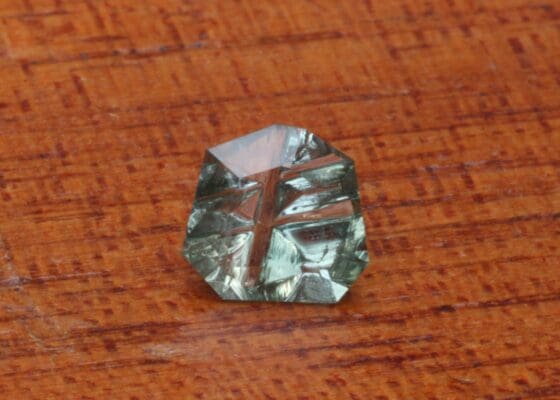
- The “Missouri River Sapphire”: One of the most notable discoveries was the “Missouri River Sapphire,” a blue gem that mesmerized with its clarity and size. This find sparked interest in the region and led to many enthusiasts venturing to Missouri’s waterways, hoping to find similar treasures.
- Lamotte Sandstone’s Agates: Found in the Lamotte sandstone formations, these unique agates are famed for their intricate patterns and striking colors. Over the years, they’ve become highly sought after by collectors and artisans alike.
- Ellington’s Quartz Crystals: Near Ellington, a cluster of quartz crystals was uncovered that was unlike any other. Radiating a soft luminescence, these quartz pieces are now part of private collections and museums, representing Missouri’s mineralogical richness.
- The “Show-Me State Geode”: This remarkable geode, discovered in a hidden cave, was almost the size of a small car and housed a dazzling array of amethyst crystals. When cracked open, it became an instant sensation in the gem community.
- Joplin’s Galena: While Galena is primarily known as a lead ore, some chunks found in the Joplin area have been aesthetic wonders. Their intricate cubic formations, coupled with sprinklings of associated minerals, have made them noteworthy.
- Ozark Barite Roses: Found primarily in the Ozark region, these formations are unique in their rose-like appearance. They are symbolic of Missouri’s geological diversity and are cherished finds among collectors.
- “Hannibal’s Hidden Ruby”: Legend speaks of a luminous ruby found near Hannibal. While its existence is debated, the stories surrounding this gem have given it an almost mythical status among local gem hunters.
- Madison County’s Fluorite Specimens: These specimens, with their intense purples and greens, have been showstoppers at gem exhibitions. They underscore Missouri’s place in the world of fluorite finds.
- The “Moberly Diamond”: An unexpected find in the fields near Moberly, this clear, well-formed diamond became a testament to Missouri’s gem-producing potential.
- Missouri Lace Agate: Renowned for its swirling patterns and contrasting colors, this agate variant has been a favorite for jewelry makers and is a testament to the state’s diverse mineral offerings.
In essence, Missouri’s gemstone tales are as varied as they are fascinating. Each find, each stone, carries with it a narrative of discovery, awe, and the enduring allure of nature’s hidden treasures. These famous gemstones serve as inspirations for every budding gem hunter setting foot in the Show-Me State.
Additional Gem Mining Opportunities
Missouri, blessed with its geologic wonders, is part of a wider region rich in mineralogical treasures. If your adventurous spirit is looking for further exploration, here’s a list of neighboring states that also offer exciting gem mining opportunities:
- Arkansas Gem Mining: Known for its quartz crystals, especially from the Ouachita Mountains. Also, the Crater of Diamonds State Park is the only public diamond mine in the world!
- Iowa Gem Mining: Famous for geodes, especially in the Keokuk area, offering enthusiasts a chance to crack open their discoveries and behold the crystal formations inside.
- Illinois Gem Mining: Best known for its beautiful fluorite specimens, especially from the southern part of the state.
- Kansas Gem Mining: While primarily recognized for its fossil finds, the state also has areas rich in amber and jasper.
- Kentucky Gem Mining: Renowned for its agates, especially the Kentucky Blue Agate, which is a favorite among collectors.
- Nebraska Gem Mining: Primarily famous for its Blue Agate, the state also offers opportunities to find other fascinating minerals.
- Oklahoma Gem Mining: Home to the famed Oklahoma Rose Rock and various other minerals, including garnets and selenite crystals.
- Tennessee Gem Mining: The state is rich in diverse minerals, from quartz and fluorite to the beautiful Tennessee River Pearls.
Expanding your gem hunting adventures beyond Missouri will provide a broader appreciation of the geological wonders of the Central United States. Each state holds unique gemological narratives, waiting to be discovered, admired, and treasured.
Dive into the world of gem mining with our extensive Gem Mining Near Me guide for top tips and locations.
The Lure of Gems and Homebound Adventures
Gem hunting in Missouri, with its rich geological tapestry, offers an adventure like no other. The allure lies not just in the promise of finding a hidden treasure but in the journey itself—the communion with nature, the thrill of discovery, the stories behind each find, and the connection to ancient earth processes that shaped these beautiful minerals.
Yet, not everyone has the opportunity or means to set out on field trips. For those who wish to experience the excitement of gem hunting from the comfort of their homes, there’s a delightful alternative—a general Gem Mining Kit. This kit encapsulates the essence of gem hunting, packed with a variety of minerals and gems waiting to be unearthed. It provides enthusiasts, both young and old, the joy of discovery without the travel. Whether you’re exploring Missouri’s landscapes or sifting through a mining kit at home, the magic of gemology awaits!

